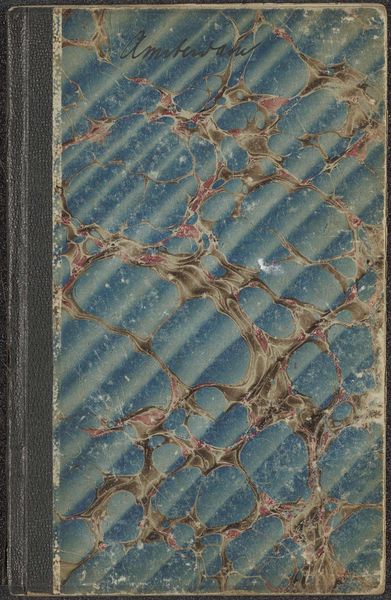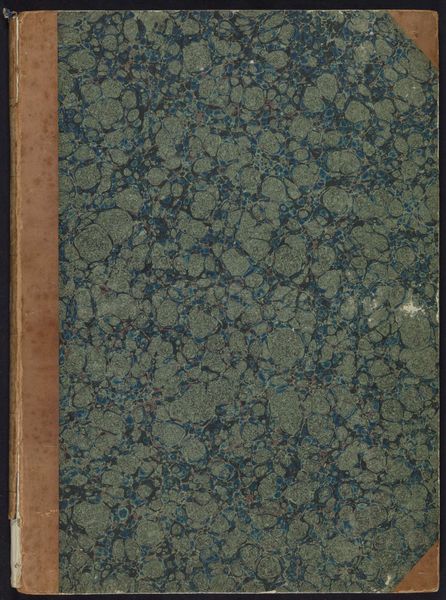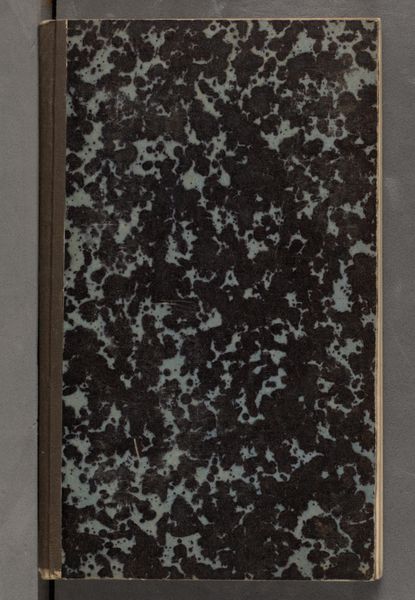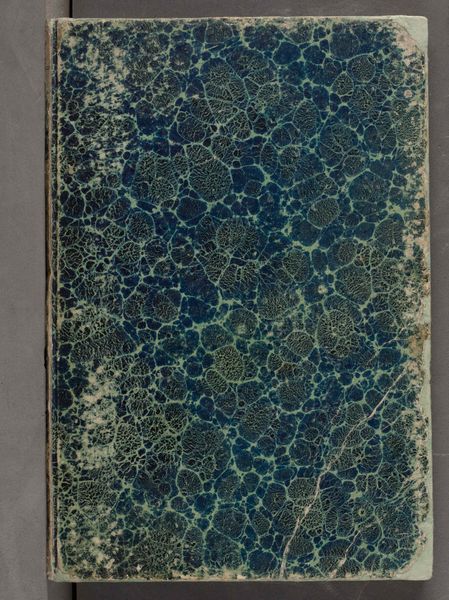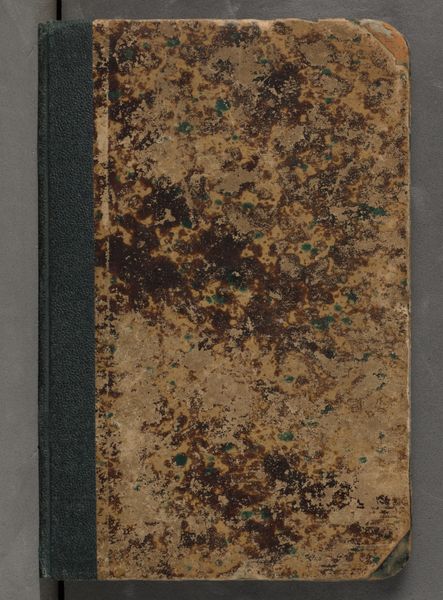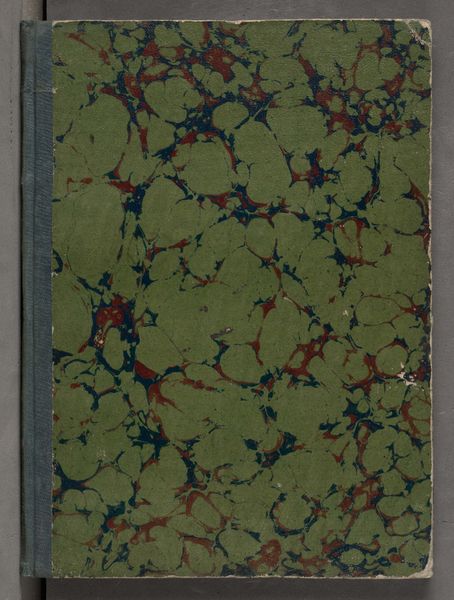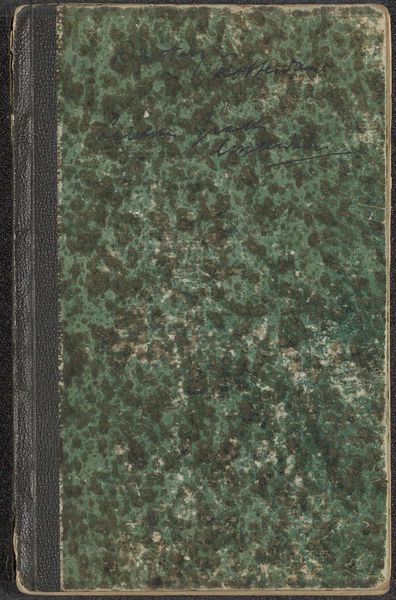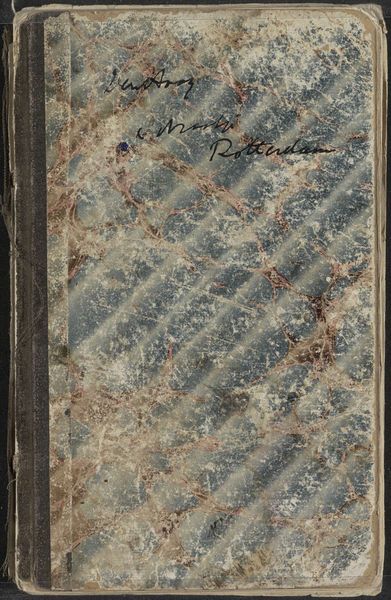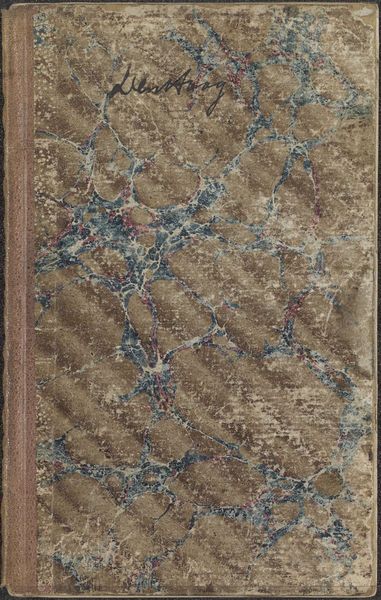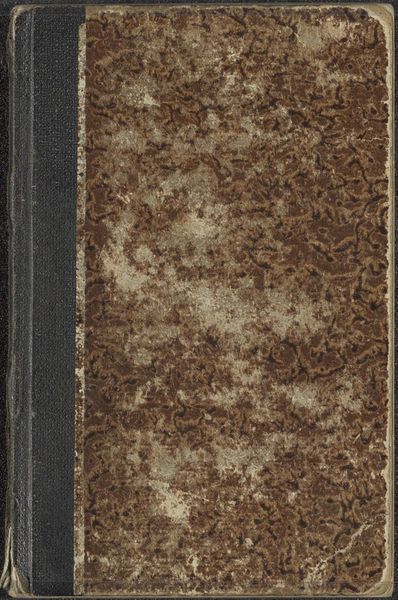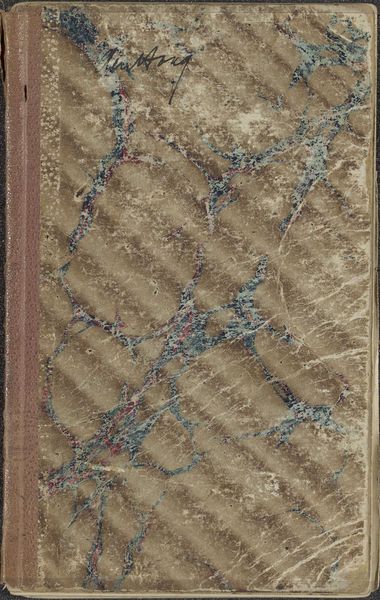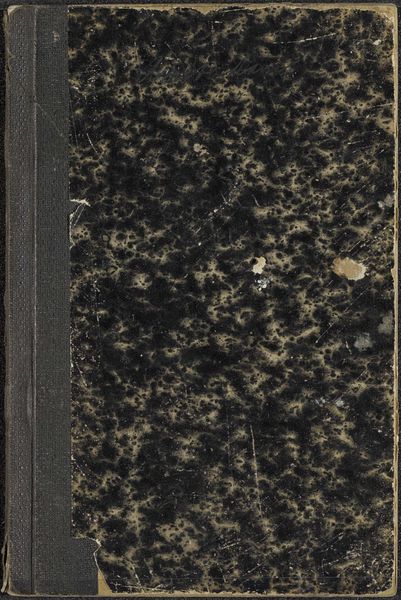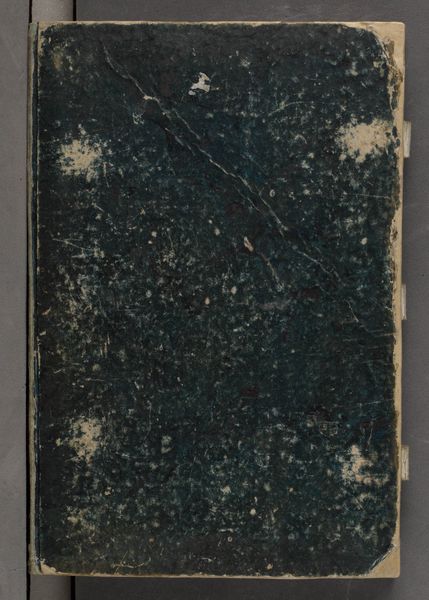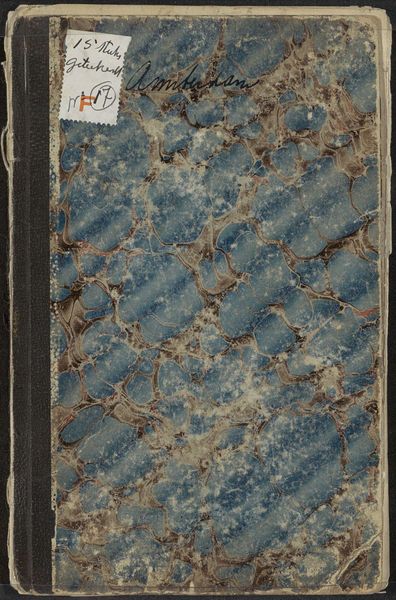
mixed-media, paper, watercolor
#
mixed-media
#
organic
#
paper
#
watercolor
#
natural texture
#
organic texture
#
watercolor
Dimensions: height 200 mm, width 128 mm, thickness 5 mm, width 260 mm
Copyright: Rijks Museum: Open Domain
Curator: Welcome. Here we have George Hendrik Breitner’s "Sketchbook with 12 Sheets," created around 1887. It's held in the Rijksmuseum. Editor: Immediately, the cover evokes a sense of something found—organic patterns in swirling blues, browns, and creams suggest marbled endpapers but with the patina of age, like unearthed geological formations or a strange mold spreading across an abandoned wall. Curator: The mixed media, incorporating watercolor on paper, contribute to that impression of spontaneity, an artist’s private thoughts caught on the page. The composition draws your eye across the swirling, almost hypnotic patterns. Editor: Absolutely. I'm curious, though, what these patterns *mean*. Given Breitner’s focus on the working class and marginalized communities, could the organic patterns mimic water stains or signs of deterioration that comment on the poverty experienced by people in Amsterdam during the late 19th Century? Were these sketches records from sites of marginal existence, and can this texture be an accidental testament to it? Curator: Perhaps, but focusing on the aesthetic elements, we can see that the patterns create dynamic tensions on the surface of this book; they both draw the viewer into a deep vortex of colour and movement but, at the same time, it asserts a clear planar perspective, due to its marbled aspect. Its value resides precisely in the contrast. Editor: It's difficult to separate these material and formal choices from Breitner's wider political milieu; if you want to be critical, Breitner became well-known as a military painter, someone more interested in social success. So what relationship is here? Is the material quality somehow trying to hide from his success? Or should we not consider the artist when we analyse it? Curator: The work resists such simplification. Its allure lies in its formal ambivalence— a structured pattern which gives way to an unsettling sensation when combined to an industrial age. Editor: Fair point. It leaves us questioning the artist's intentionality and its role to the social landscape. Thank you! Curator: Indeed. There’s a fascinating conversation embedded within the piece that compels further attention, with implications that extend far beyond surface aesthetics.
Comments
No comments
Be the first to comment and join the conversation on the ultimate creative platform.
